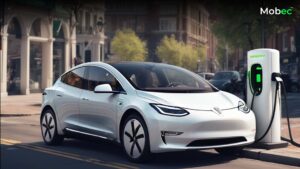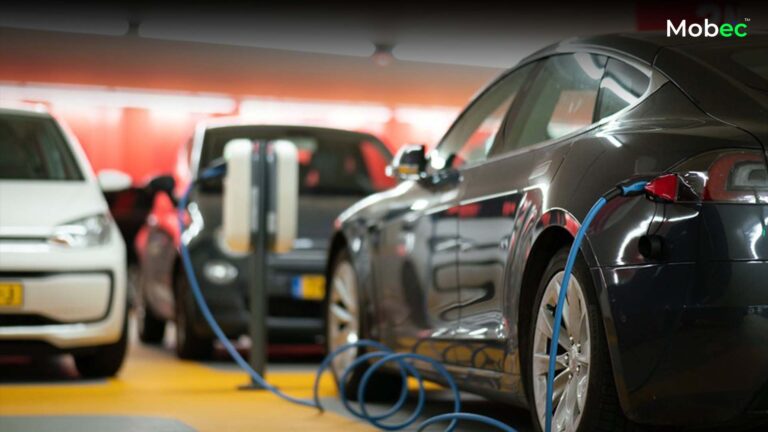As the world shifts towards a more sustainable future, electric vehicles (EVs) have emerged as a key player in reducing carbon emissions and dependency on traditional fossil fuels. Central to the success of electric cars is the infrastructure that supports them, particularly charging stations. In this comprehensive guide, we’ll delve into the diverse landscape of charging stations for electric cars, exploring the different types, their functionalities, and how they contribute to the widespread adoption of electric vehicles.
The Evolution of Charging Stations:

A. From Standard Outlets to Dedicated Charging Stations
The journey of electric vehicle charging has come a long way from simply plugging into a standard household outlet. While conventional outlets can still be used for slower charging, the demand for faster and more efficient charging solutions has led to the development of various types of dedicated charging stations.
- Level 1 Charging:
Level 1 charging utilizes a standard 120-volt household outlet, providing a charging rate of about 2 to 5 miles of range per hour. While this is the slowest charging option, it remains a practical choice for overnight charging at home, especially for electric car owners with lower daily mileage.
- Level 2 Charging:
Level 2 charging stations operate on a 240-volt circuit and offer a significantly faster charging rate compared to Level 1. With charging speeds ranging from 10 to 60 miles of range per hour, Level 2 stations are commonly found in public spaces, workplaces, and residential settings. These stations typically require professional installation.
B. Fast-Charging Stations:
Recognizing the need for quicker charging, fast-charging stations have become a staple in the electric vehicle charging infrastructure. These stations provide a higher charging rate, making them ideal for on-the-go charging and long-distance travel.
- DC Fast Charging:
DC (direct current) fast-charging stations are capable of delivering a substantial amount of power to an electric vehicle’s battery in a short period. They are commonly found along highways and in locations where quick charging is essential. DC fast-charging stations are characterized by their compatibility with various electric vehicle models and faster charging times compared to Level 2 stations.
Types of Charging Connectors:

A. CHAdeMO:
Developed in Japan, CHAdeMO is a fast-charging standard that uses a unique connector. While it was initially popular in Asian markets, CHAdeMO has gained global recognition, with many electric vehicles supporting this standard. CHAdeMO connectors are known for their compatibility with fast-charging stations, enabling efficient charging sessions.
B. CCS (Combined Charging System):
CCS is a fast-charging standard that combines an AC (alternating current) connector for Level 2 charging with a DC connector for fast charging. Widely adopted in North America and Europe, CCS connectors are versatile, accommodating various charging speeds. This standard has gained prominence among major automakers, contributing to its widespread use.
C. Tesla Supercharger:
Tesla, a pioneer in the electric vehicle market, introduced its proprietary Supercharger network. Tesla Superchargers use a unique connector designed specifically for Tesla vehicles, offering high-speed charging. While Tesla Superchargers are tailored for Tesla models, the company has announced plans to open their charging network to other electric vehicles using an adapter.
Home Charging Solutions:

A. Wall-Mounted Charging Stations:
Home charging solutions have become increasingly popular as more people adopt electric vehicles. Wall-mounted charging stations, also known as electric vehicle supply equipment (EVSE), provide a dedicated and efficient way to charge an electric car at home. These stations are typically installed by professionals and offer faster charging rates compared to standard household outlets.
- Smart Home Charging Stations:
The integration of smart technology into home charging solutions adds an extra layer of convenience for electric car owners. Smart charging stations allow users to monitor and control the charging process remotely, schedule charging sessions during off-peak hours, and receive notifications when charging is complete. These features contribute to energy efficiency and cost savings.
- Portable Charging Solutions:
For electric car owners who may not have access to a dedicated parking space, portable charging solutions offer a flexible alternative. Portable chargers can be plugged into standard outlets, providing a convenient way to charge an electric vehicle wherever there’s access to electricity.
B. Wireless Charging Technology:
The concept of wireless charging has gained traction in the electric vehicle industry. Wireless charging eliminates the need for physical cables, offering a convenient and hassle-free charging experience. While this technology is still in its early stages, it holds the potential to revolutionize the way electric vehicles are charged, especially in home and public settings.
- Inductive Wireless Charging:
Inductive wireless charging relies on electromagnetic fields to transfer energy between the charging station and the electric vehicle. The vehicle must be parked over a charging pad for the system to work. While this technology is convenient, it currently offers slower charging speeds compared to some wired alternatives.
Public Charging Networks:
A. Commercial Charging Stations:
Public charging networks play a crucial role in supporting electric car owners who need to charge away from home. Commercial charging stations are strategically located in urban areas, shopping centers, and along highways to provide convenient access for electric car users.
- Networked Charging Stations:
Many public charging stations are part of networked systems operated by charging providers. These providers offer membership programs, mobile apps, and payment solutions that streamline the charging process for users. Networked charging stations often support multiple charging standards, ensuring compatibility with a wide range of electric vehicles.
- Workplace Charging Stations:
Employers are increasingly recognizing the importance of providing charging infrastructure for their employees. Workplace charging stations encourage the adoption of electric vehicles by offering a convenient and reliable charging option during working hours. This trend aligns with corporate sustainability initiatives and contributes to the growth of electric vehicle ownership.
B. Destination Charging:
Destination charging refers to the installation of charging stations at locations where people spend an extended period, such as hotels, restaurants, and tourist attractions. These charging stations are designed to support electric car owners while they engage in activities, making them an essential part of the overall charging infrastructure.
- Hotel and Restaurant Charging:
Hotels and restaurants that offer charging stations provide added value to their guests and customers. Destination charging promotes longer stays and encourages electric vehicle owners to choose establishments that support their charging needs, contributing to the growth of sustainable travel.
- Recreational and Tourist Locations:
Installing charging stations at recreational areas and tourist destinations is a strategic move to attract environmentally conscious visitors. Destination charging networks contribute to the development of sustainable tourism by making electric vehicle travel more accessible and enjoyable.
The Future of Charging Stations:
A. Ultra-Fast Charging:
As electric vehicle technology advances, the demand for even faster charging solutions continues to grow. Ultra-fast charging stations, capable of delivering over 300 kW of power, are being developed to significantly reduce charging times. These stations are expected to play a pivotal role in making electric vehicles more practical for long-distance travel.
- 800V Charging Systems:
Some electric vehicles are adopting 800-volt charging systems, which allow for faster charging without increasing the current. This innovation enables ultra-fast charging and is a step towards reducing the time it takes to charge an electric vehicle to levels comparable to refueling a traditional vehicle with gasoline.
B. Integration with Renewable Energy:
To enhance the sustainability of electric vehicle charging, integrating renewable energy sources is a key focus. Charging stations powered by solar, wind, or other clean energy sources contribute to a greener and more environmentally friendly transportation ecosystem.
- Solar-Powered Charging Hubs:
Solar-powered charging hubs leverage photovoltaic technology to generate electricity for charging stations. These hubs can be deployed in areas with abundant sunlight, reducing the reliance on the grid and promoting a more sustainable charging infrastructure.
- Vehicle-to-Grid (V2G) Technology:
V2G technology enables electric vehicles not only to draw power from the grid but also to return excess energy back to it. This bidirectional energy flow supports grid stability and offers a potential revenue stream for electric vehicle owners, creating a more dynamic and interconnected energy ecosystem.
Conclusion:
The landscape of charging stations for electric cars is continually evolving, reflecting the rapid advancements in electric vehicle technology and the growing demand for sustainable transportation. From standard home charging solutions to ultra-fast charging stations, the diverse array of options caters to the varied needs of electric car owners. As the world embraces the electrification of transportation, the development of efficient, accessible, and sustainable charging infrastructure will remain crucial. Exploring the different types of charging stations is not just a glimpse into the present but a window into the exciting future of electric mobility, where innovation and environmental consciousness go hand in hand.





















[…] […]